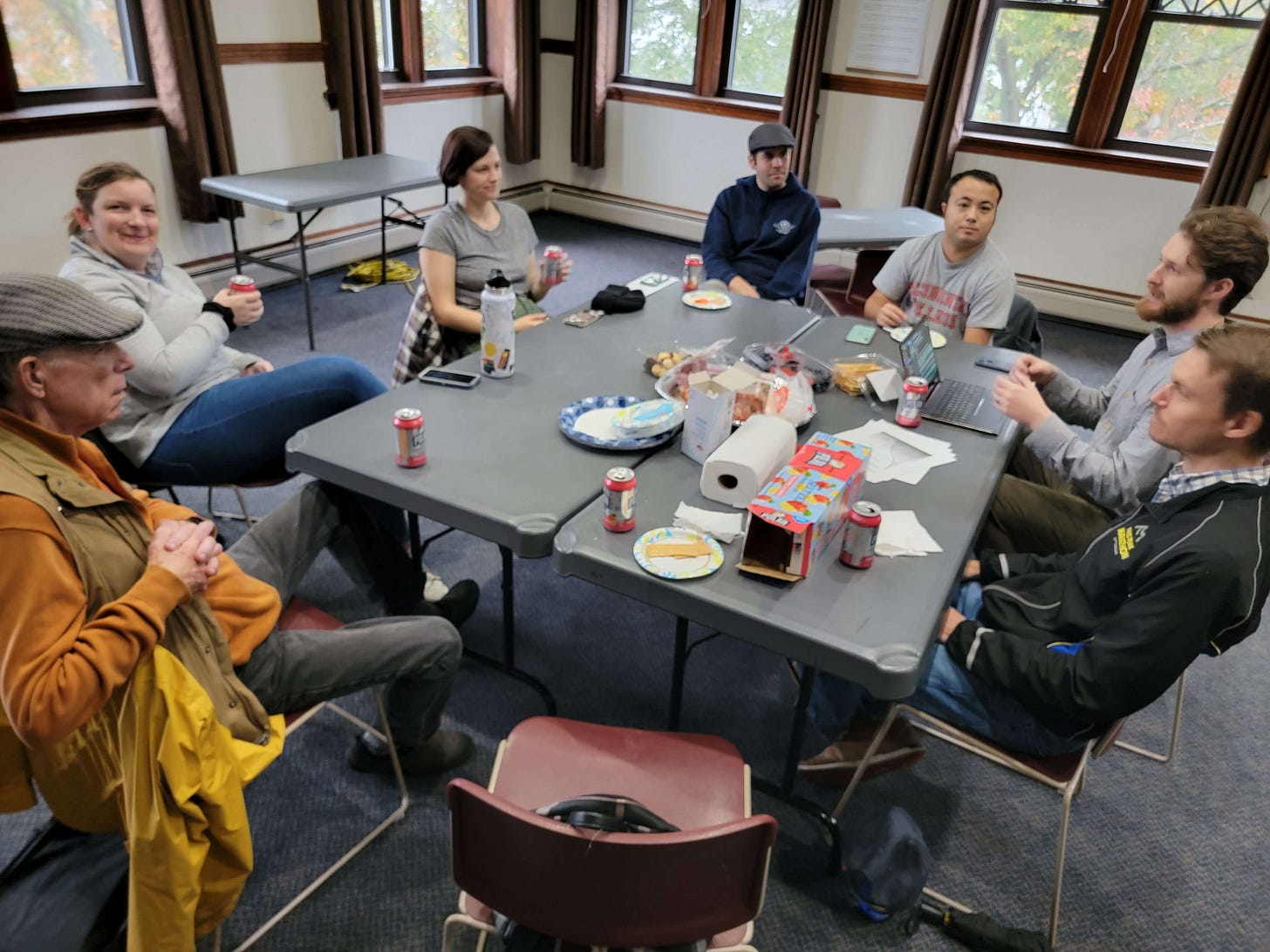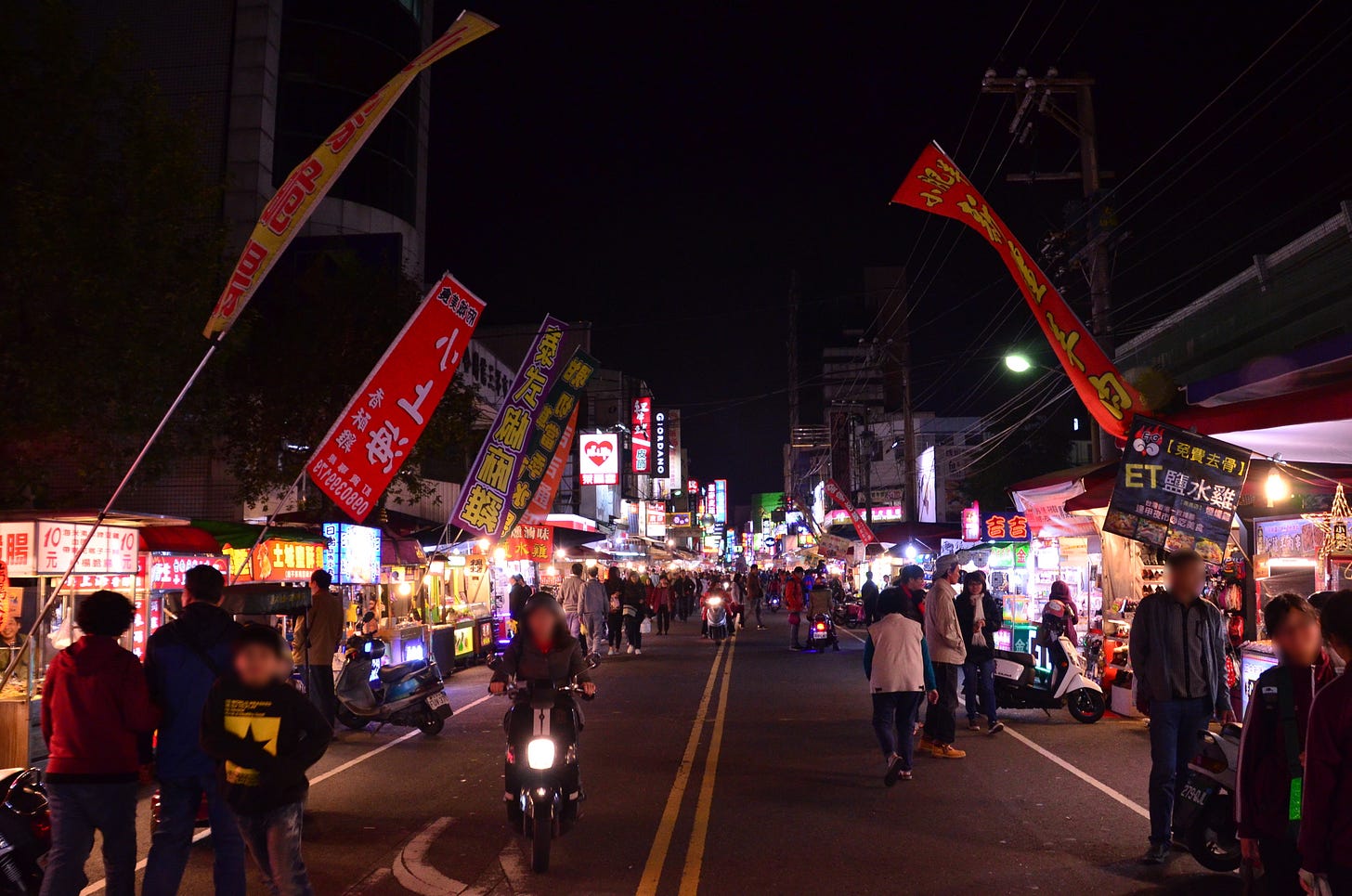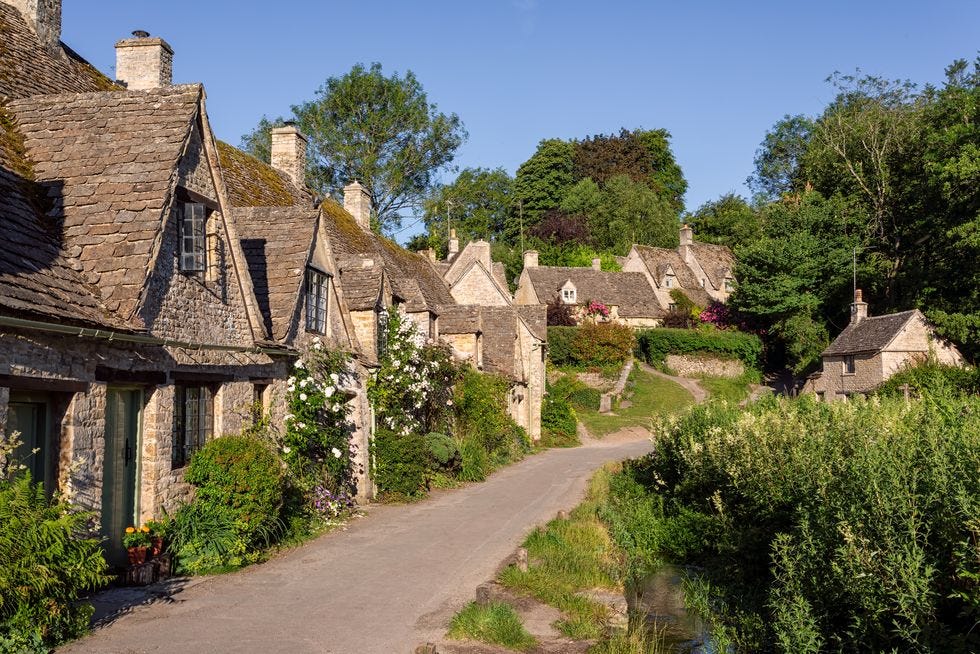Thank you to everyone who showed up for our third meeting today, I am very thankful for your interest and support. I know we covered a lot of topics today and I wanted to give a summary for some of those ideas as well as areas to explore them more.
Before I get into that I do want to set the date and topic for the next meeting so you can have it on your calendar, and I’m also going to ask for a little homework from people who want to attend. Our next meeting will be on November 18th 2023 and I will try to get the library room again. We are going to continue our topic of transportation and talk more about specific aspects such as congestion, intersections, and parking. However, we are going to split this session into two sections, one for discussing Strong Towns ideas, and one for discussing the group’s ideas on a potential project to focus on.
That’s where the homework comes in, I would like for people to come with some ideas prepared to discuss. Our goal is to find a project that the group can focus on and start putting some of the topics we’ve discussed into practice. I’ll come with some ideas of my own, but I encourage you to think of smaller investments that our group can handle. I hope you are excited for the next conversation!
Meeting Notes
We talked today about four topics
A history of transportation standards in the USA
The difference between a street and a road
What makes a great road
What makes a great street
A Brief History of Transportation Standards
Pathways have a natural evolution over time where small investments are made, such as making a cart path, laying down stones, paving etc. This lets useful paths become more solidified with use over time and is a bottom-up approach to improving a transportation network.
In the 1950's the USA decided to build the interstate highway system. It was built for many reasons and was mostly completed in around 15 years. New, top-down defined standards were applied to a hugely ambitious top-down funded project that had the intention of radically transforming an entire country for a transportation network based on a relatively new type of transportation technology, the automobile.
The Highway Act in 1944 gave states a 50% federal funding match to build highways and The Interstate Act in 1956 upped this to 90%. This greatly incentivized states to expand the size of their projects to qualify for the 90% funding. Local developers, land owners, land speculators, and many big influences in communities benefited from this because it opened up access to federally financed developments that could be monetized at the state and local levels.
The original intention was for the interstate highways to go around cities and not through them and President Eisenhower even said that the program was not followed according to his wishes. However the ability to monetize nearby land with developments around the city then letting people commute using highways was a strong incentive to build highways through cities. All of this happened really quickly, over the course of a few decades, and a new vision for what America would be manifested rapidly. The interstate highways were started less than 70 years ago and are only about 50 or so years old and just think how significant they are to America today.
Most local governments get their transportation standards by copying nearby cities who copied other nearby cities who copied the state standards who copied the federal standards. Things like lane width, recovery zones, speed limits, signage, etc were copied at the local level from the federal level and highway standards started getting applied to neighborhood streets.
The Difference Between a Road and a Street
In transportation infrastructure discussions there is a current hierarchy of investments that goes in this order:
Residential/Local
Collector
Arterial
Highways
You can read more about these classifications by clicking here.
This definition uses a curve graph that shows land access and mobility as a compromise to one another. In order to have high mobility you have low access to the surrounding land, think about the interstate system and how little access you have to the shops locations that you are driving by. In contrast if you have high access to the land you have low mobility. This relationship does make sense, but Strong Towns suggests to instead of thinking of access and mobility on a curve and choosing how much you want of each to think of transportation investments as either streets or roads.
Roads are high-speed connections between places. Consider a railroad, you get on at one place and off at another place. There are no driveway rail streets or opportunities to stop at shops along the way, there are clear on and off points between two productive places.
Streets are platforms for building wealth. they are the framework for our communities, they are destinations, they are where things happen.
In contrast to the above graph Strong Towns presents a different graph for locating value for our communities. Streets create valuable, productive places for people and roads create valuable, movement between these productive places. In the middle you can see that value decreases when you attempt to do both at once. You end up with a stroad.
A stroad is a combination of a street and road. It attempts to be both a high-speed corridor for movement and a high-access place for productivity, but fails to deliver the value of either. Stroads are very expensive to build and maintain, difficult to make safe, and are not great tools for creating wealth in a community. An example of a stroad would be High Street between Dover and Somersworth.
Great Roads
A good road reduces travel time between places. A simple way of thinking about this is to consider a road a high-speed connection between places because higher speeds reduce travel time. However, higher speeds must be maintained for the road to still be considered a high-functioning road and so the important takeaway from this is that a good road isn't solely about higher speeds. For instance a stretch of asphalt with high speeds and traffic lights every mile is not a great road, it also needs to reduce travel time.
The most critical roads for your community will be the ones that connect your community to others. These are the value-producing roads that your community relies on to get between places. In the USA there is a habit of building a successful road that effectively reduces travel time between places and then over time making developments along the road that create congestion or necessitate traffic signals and thus degrade the value of the road. Compare the interstate system or Spalding Turnpike, both of which are great roads, with something like US 4 in Durham or State Highway 108 that goes through Dover and Somersworth. Those last two have traded the effectiveness of the road for developments along side it, turning them into stroads.
This is an image of a city-focused development pattern where cities are spaced nearly 6 miles from each other with a high-speed connection between them while the cities themselves have quite low speeds. In this example there are very few points of access along the roads connecting the cities and most all of the development happens near or in the cities.
This image describes the American-style development pattern that focuses more on creating developments along the road and damaging its value. The base speed within cities is higher in this example, but your top speeds are lower due to the increase in developments.
Between these examples the city-centric pattern has a lower travel time between cities and therefore is a more valuable road pattern. By concentrating our developments in cities while keeping their speeds lower and maintaining the high-speeds of the roads between them we reduce travel time between City A and City C.
Engineers are pretty good at building roads, but local economics tends to put pressure on that process and create lower value roads. Much of the damage comes from projects that generate a short-term economic gain and as a community we need to defend our roads from accesses that will degrade their value and prioritize maintaining them as high-speed connections and not extensions of the city to be developed along.
Great Streets
Street design is an art, not a science. We should not be building our streets out of an engineering guideline as if it is a cookbook for streets. Engineer guidelines are helpful to make informed decisions, but the decision needs to match each community's unique needs. This is how the community will meet together, how it will interact, how it will build wealth together.
It is important that we don't think of our residents, our neighbors, and fellow community members as customers. If you want a financial term to describe the relationship the term "shareholder" is more accurate. Community residents are long-term shareholders in a collaborative project together. Short-term solutions to long-term problems don't build wealth, it actually damages it for the community.
When the community makes an investment in something like a street it is important to recognize that the primary function of it is not to move cars through it. Sometimes moving cars or storing cars is a way to build wealth, but building wealth is about more than that. If our conversations around our streets are focused on solutions to car traffic, we are missing a huge part of the conversation around how to build wealth with them. If moving more cars costs the community the ability to walk or bike through the city, or if it costs the ability for the community to meet and organize, or any number of other intangible, valuable communal aspects, then we need to ask, "Is it worth it?".
Which comes first, the street or the wealth adjacent to it? Do we heavily invest in streets in the pursuit of more wealth? To create viable streets, they should be built to the scale of wealth present along them and let them mature over time with incremental investments. If we look at how older cities built streets, cities that have lasted for many generations, they did not build them to that finished state and stay that way for generations. They started by building a small shack along a dirt path, that small shack became a small house, that house became a building, the path was reinforced with gravel, and then became paved, and over time with incremental investments it became a lasting part of the city.
When you scale the street to the wealth along it you are making it more viable, you are allowing the existing wealth to maintain the integrity of the street, and you are setting the street up for incremental investment. The non-intense public investment into the street matches the non-intense private investment along it. If we want wealthier streets we need to talk about how the wealth adjacent to it can maintain it over time.
Strong Towns provides this example of Front Street and Laurel Street, separated by a single block, in Brainerd Minnesota to see the evolution of a street over time.
















